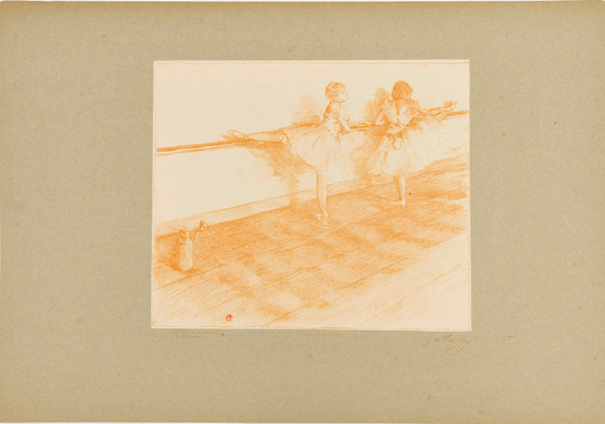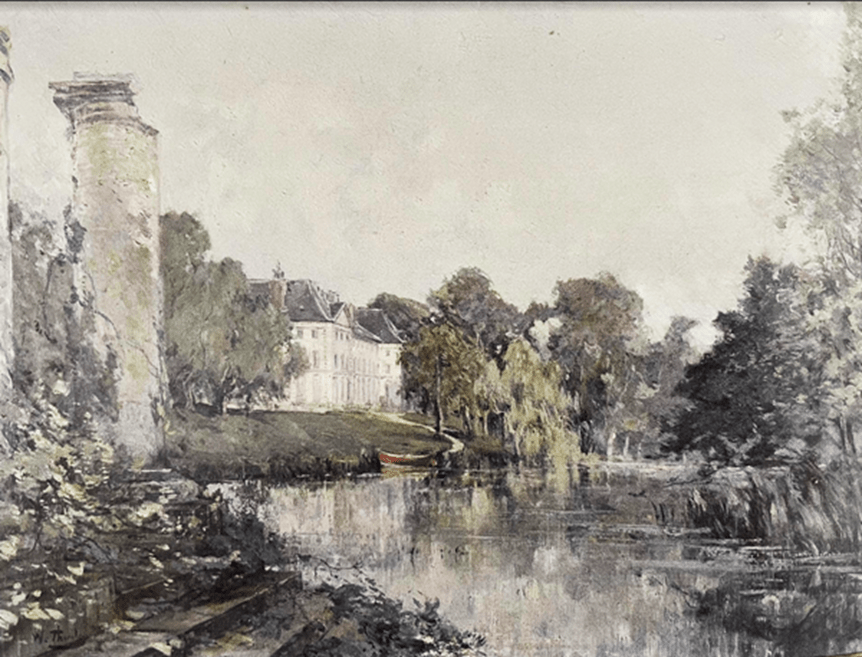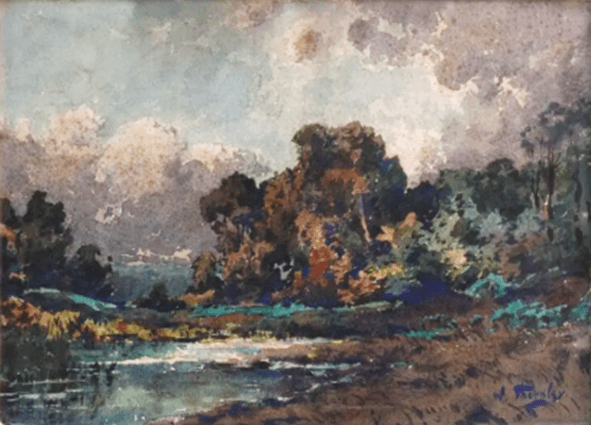Danseuses à la barre. Lithographie de William Thornley d’après Edgar Degas. Origine du visuel : INHA (0618_doucet_FEST260) – Sous licence Ouverte. Une des quinze lithographie originales tirée de l’album édité par Boussod, Valadon & Cie, 1889. L’album (au format de 47,6x35cm) a été imprimé à seulement 100 exemplaires par la maison Becquet Frères. Dimensions du sujet : 23,6cm x 28,2cm.
L’oeuvre qui servit de modèle à William Thornley est une huile sur toile réalisée par Degas en 1877, aux dimensions de 81,3 x 75,6 cm. Elle fut présentée lors de la troisième exposition impressionniste qui s’est tenue à Paris du 4 au 30 avril 1877 rue Le Peletier. Elle fait aujourd’hui partie des collections du MET (The Metropolitan Museum of Art) aux Etats-Unis, à New-York.
Ce tableau a été offert vers 1877 par Edgar Degas à son ami Henri Rouart (1891-1912). Lors de sa vente en 1912, le tableau est vendu au prix (exceptionnel pour l’époque) de 95 700 $, à la collectionneuse d’œuvres d’art Louisine Havemeyer (1855-1929). En 1929, le tableau revient au MET, suite à un leg de Louisine Havemeyer au célèbre musée new-yorkais.
On trouve ce commentaire intéressant fait par le MET concernant un détail du tableau « L’arrosoir, visible à gauche, était un élément standard des salles de répétition de ballet ; l’eau était aspergée sur le sol pour empêcher la poussière de s’élever lorsque les ballerines dansaient. Degas a également utilisé l’arrosoir comme un jeu de mots visuel : sa forme est imitée par celle de la danseuse à droite ».

Danseuses à la barre. Lithograph by William Thornley from a model of Edgar Degas. Origin of the visual: INHA (0618_doucet_FEST260) – Under Open License. One of the fifteen original lithographs from the album published by Boussod, Valadon & Cie, 1889. The album (47.6x35cm format) was printed in only 100 copies by the Becquet Frères publishing house. Dimensions of the subject: 23.6cm x 28.2cm.
The work that served as a model for William Thornley is an oil on canvas made by Degas in 1877, with dimensions of 81.3 x 75.6 cm. It is now part of the collections of the MET (The Metropolitan Museum of Art) in the United States, in New York.
This painting was given around 1877 by Edgar Degas to his friend Henri Rouart (1891-1912). When it was sold in 1912, the painting was sold for the (exceptional for the time) price of $95,700, to the art collector Louisine Havemeyer (1855-1929). In 1929, the painting returned to the MET, following a bequest from Louisine Havemeyer to this New York museum.
We find this interesting comment made by the MET concerning a detail of the painting « The watering can, visible at left, was a standard fixture in ballet rehearsal rooms; water was sprinkled on the floor to keep dust from rising when ballerinas danced. Degas also used the watering can as a visual pun: its shape is mimicked by that of the dancer at right. ».



